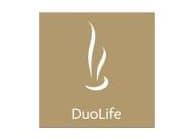
Quercetin – pro-health properties. What are the natural sources of quercetin? When is it worth supplementing?
Quercetin belongs to the group of bioactive plant compounds with antioxidant activity, called flavonoids. It is a natural plant pigment found in many fruits and vegetables, it is found in e.g. green tea leaves, onions, broccoli, apples, blueberries and grapes. Quercetin has valuable anti-inflammatory and anti-cancer properties, it also has a positive effect on the cardiovascular system and metabolism.
Quercetin – characteristics
Quercetin is a compound that belongs to plant flavonoids, more specifically to flavonols. Flavonoids are organic chemical compounds, in most cases they are dyes – they take yellow or white colors, less often they are colorless.
 Quercetin exists in the form of glycosides as well as in free form. It is obtained by crystallization from plant extracts. Quercetin glycoside is fat soluble and, compared to the free form, its water solubility increases. Quercetin occurs, inter alia, in in green tea, red cabbage, onions, berries, tomatoes, grapes. The literature also draws attention to the use of quercetin in industry as a dye (e.g. for dyeing cotton orange and red).
Quercetin exists in the form of glycosides as well as in free form. It is obtained by crystallization from plant extracts. Quercetin glycoside is fat soluble and, compared to the free form, its water solubility increases. Quercetin occurs, inter alia, in in green tea, red cabbage, onions, berries, tomatoes, grapes. The literature also draws attention to the use of quercetin in industry as a dye (e.g. for dyeing cotton orange and red).
Quercetin – action
Quercetin – anti-inflammatory properties
Quercetin is a compound that exhibits anti-inflammatory properties. It inhibits the formation of pro-inflammatory cytokines and is also a protective factor for nerve cells, protecting neurons from degradation.
Quercetin also affects the work and activity of cyclooxygenase enzymes (mainly COX-2). This action translates into inhibition of leukocyte inflow and reduction of inflammation. This activity also translates into maintaining the appropriate state of tone of the capillaries.
Quercetin – anti-cancer properties
Literature data show that quercetin has beneficial anti-cancer properties. The action of this compound consists in, among other things, helping to remove abnormal and damaged cells of the body, as well as by showing antiproliferative properties. These properties make quercetin a compound that has the potential to support chemotherapy.
The antioxidant activity of quercetin may contribute to the protection of healthy cells and protect the body against the formation of cancer cells.
It is also worth paying attention to the results of studies carried out to combine quercetin in therapy with cytostatics, e.g. with doxorubicin and an antiestrogen (tamoxifen). Inhibition of tumor cell proliferation as well as inhibition of their angiogenesis have been observed. Other studies also show that neoplastic cells under the influence of a certain concentration of quercetin showed a lower ability to develop and divide.
Quercetin – antiatherosclerotic properties
Quercetin, as a compound belonging to the group of flavonoids, has antioxidant properties. This has a positive effect on the reduction of the risk of mortality caused by diseases related to the cardiovascular system.
Studies have shown that people whose diets were rich in flavonoids had fewer cardiovascular diseases. The research shows beneficial changes related to lipid metabolism, improved vascular flexibility, strengthening of blood vessels and reducing their brittleness.
Quercetin – antiviral properties
The literature also highlights the antiviral properties of quercetin. Research indicates that quercetin exhibits the ability to bind to viral coat proteins.
They list the following types of viruses whose activity has been inhibited by quercetin: herpes viruses (HSV), rabies, influenza and the polio virus. The studies also confirmed the effect of quercetin on the inhibition of HIV-1 activity, including the inhibition of HIV-1 penetration into CD4 lymphocytes.
Quercetin in obesity
In anti-obesity studies, it has been shown that quercetin can control the mass of adipose tissue. This flavonoid can affect fat cells by:
inducing apoptosis (natural death) of fat cells,
inhibiting the formation of fat cells,
increase in lipolysis.
Quercetin – sources and supplementation
The sources of quercetin include:
- fruits (aronia, blueberries, peaches, black currants, figs, pears, apples, blueberries, elderberries, yellow plums, white grapes, green grapes, cherries),
- fruit juices (apple juice, orange juice, lemon juice, pomegranate juice, lime juice),
- vegetables (broccoli, boiled Brussels sprouts, beetroot, white onion, red onion, garlic, cauliflower, red cabbage, carrots, peppers, tomatoes, lettuce, celery, sorrel, asparagus, spinach),
- spices (fresh and dried oregano, tarragon, capers, coriander leaves, dill, bay leaves, lovage, parsley)
A higher quercetin content was observed in raw fruits and vegetables, while a lower content in juices. It is worth remembering that green tea is also a good source of quercetin.
Quercetin is included in many dietary supplements used, for example, in diabetes, it can also be found in antiallergic preparations. Before using several preparations, pay attention to their composition – whether the ingredients contained in them are not repeated. Supplementing with quercetin should complement the diet, excessive intake of preparations containing this flavonoid may turn out to be unfavorable for the body.
Related
Trackbacks and pingbacks
No trackback or pingback available for this article.














Leave a reply